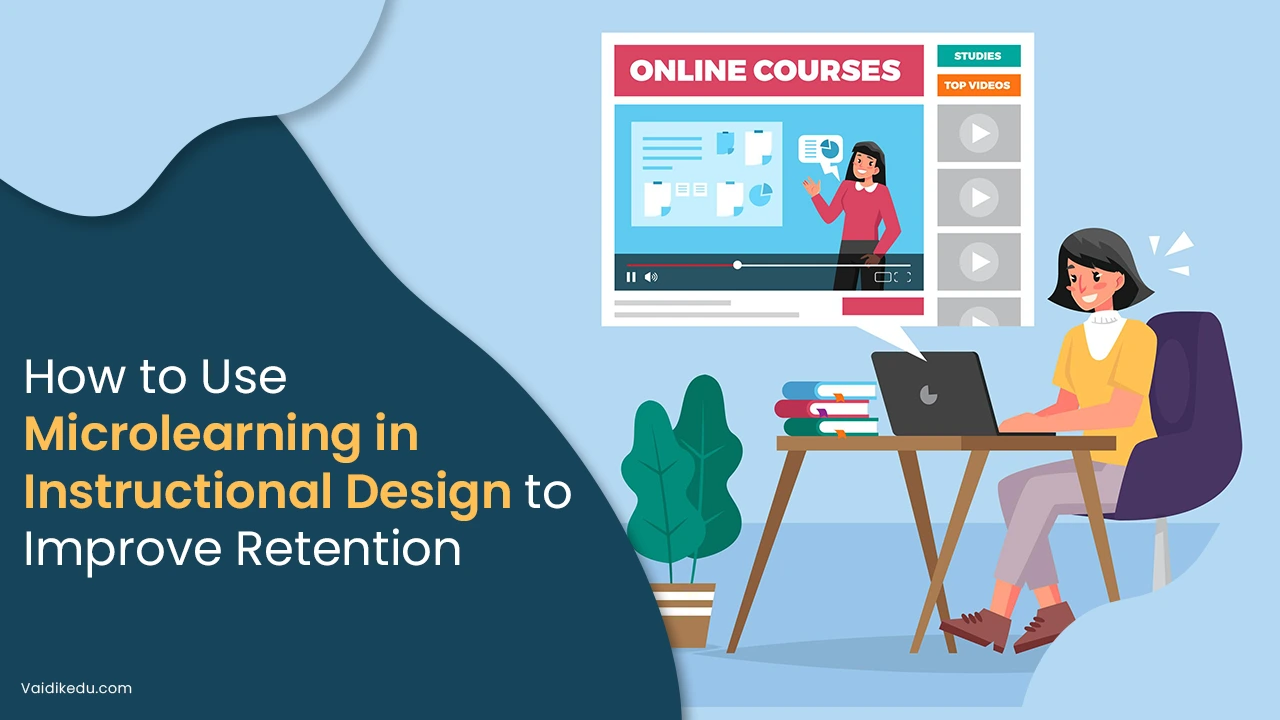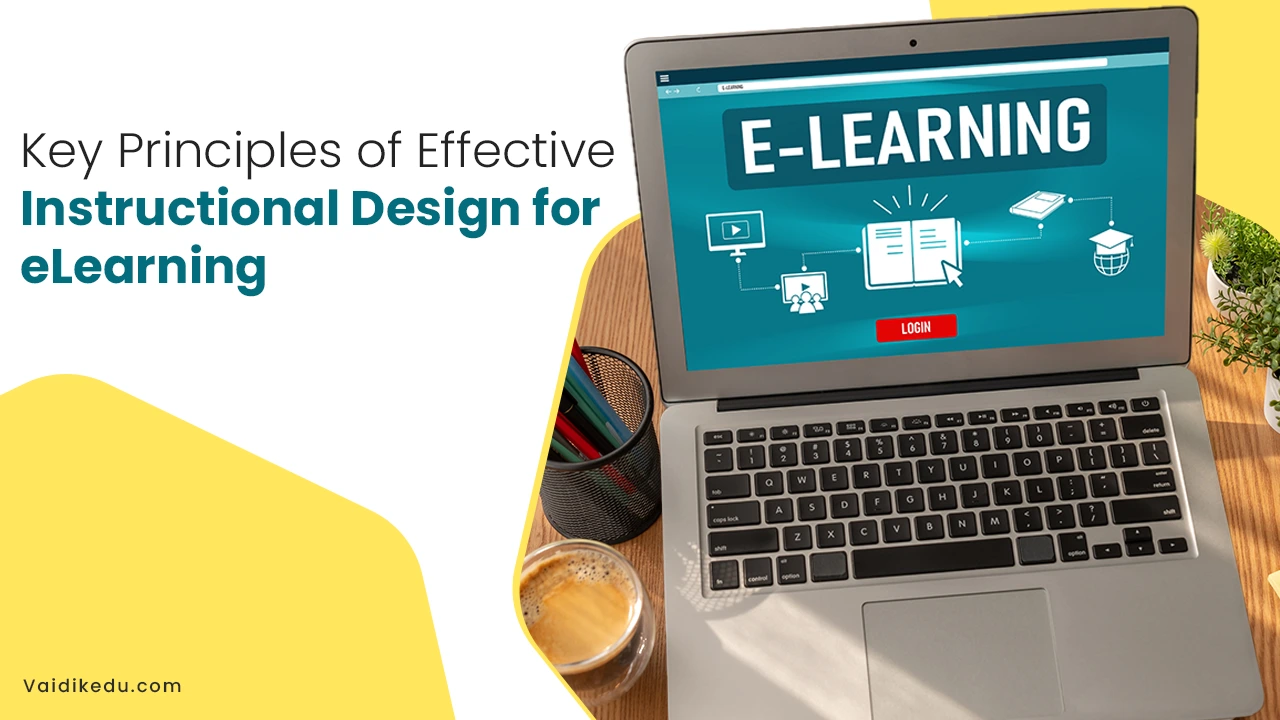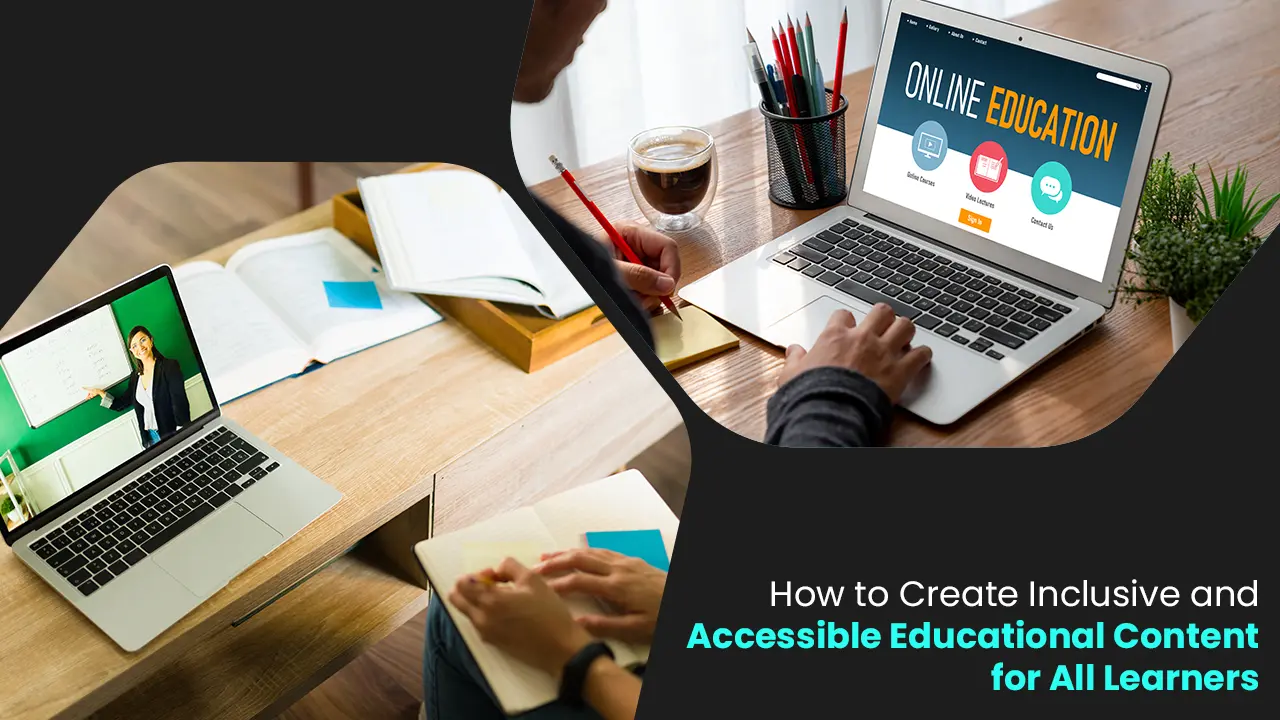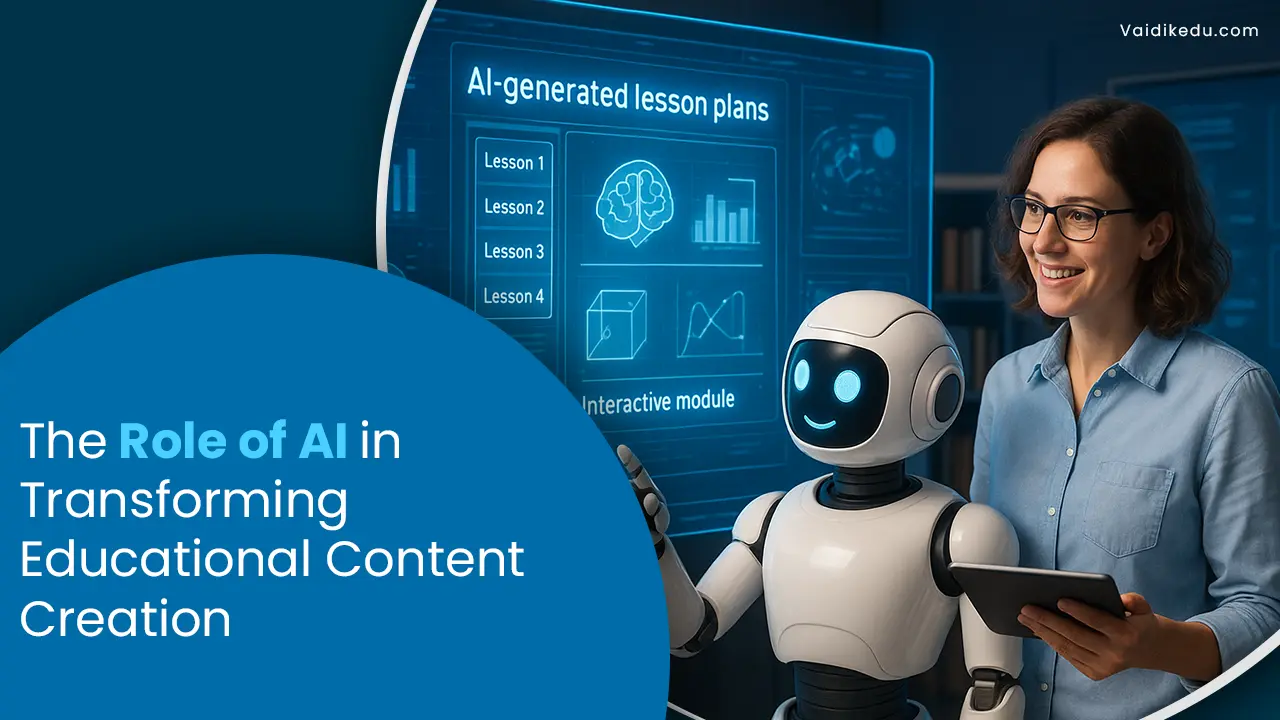Since E- Learning enables learners to access content at any time and from any location, it has completely changed the way that training and education are provided. This convenience does, however, present certain difficulties, such as how to guarantee that students stay interested, remember the information, and use it efficiently.
Instructional design becomes crucial at this point. Creating relevant and captivating learning experiences that are suited to the audience’s needs is the goal of instructional design for E- Learning, which goes beyond simply developing online courses.
Through the integration of design concepts and instructional methodologies, eLearning producers may guarantee that their courses yield quantifiable outcomes.
It is impossible to overestimate the significance of good instructional design in eLearning. Ineffective knowledge transfer, low completion rates, and disengaged learners can all be consequences of poorly designed eLearning materials.
Instructional designers must rely on fundamental ideas that have been shown to improve learning outcomes in order to steer clear of these problems. These guidelines include establishing specific learning goals, developing information that is focused on the learner, adding interaction, and making effective use of multimedia.
As more and more sectors rely on online education, understanding these concepts is crucial to creating eLearning experiences that have an impact and provide outcomes.
Both art and science are involved in instructional design. It creates learning experiences that not only interest students but also guarantee they meet the intended learning outcomes by fusing creativity with research-based tactics. Instructional designers may produce engaging and successful courses by concentrating on concepts like user engagement, cognitive load management, and individualized learning.
Following the fundamentals of instructional design guarantees that your eLearning material will satisfy the demands of a wide range of learners while accomplishing organizational objectives, whether you’re creating corporate training modules, academic courses, or skill-building initiatives.
Effective Instructional Design Principles For Online Learning
1. Establish Specific Learning Goals
Establishing precise and quantifiable learning objectives is the cornerstone of good instructional design. These goals act as a road map for the entire course, directing the creation of the content as well as the path taken by the student.
To make sure they are actionable, objectives should adhere to the SMART framework: Specific, Measurable, Achievable, Relevant, and Time-bound. For instance, it would be more effective to state, “Learners will be able to identify and apply three key workplace safety protocols by the end of the module,” rather than, “Learners will understand workplace safety.” Well-defined goals provide students direction, establish expectations, and keep them focused on their goals.
2. Create Content Focused on Learners
The learner is central to the design process of effective eLearning. In order to provide information that appeals to the audience, it is necessary to comprehend their needs, preferences, and learning styles. In order to determine elements like past knowledge, career objectives, and possible difficulties, instructional designers must perform audience analysis.
Accessibility is also emphasized by a learner-centric approach, which makes sure that the material is inclusive and accessible to those with a range of requirements, including those who have disabilities.
By making the content interesting and relevant, personalization such as adaptive learning pathways that accommodate varying skill levels further improves the learner’s experience.
3. Use Interactivity to Increase Involvement
Maintaining student involvement is one of the fundamental problems of eLearning, particularly in self-paced courses. One effective strategy for maintaining students’ active participation in the learning process is interactivity.
By motivating students to apply their information in real-world situations, interactive components like simulations, drag-and-drop exercises, quizzes, and scenario-based learning not only make courses more interesting but also improve retention.
Adding gamification components, such leaderboards, medals, and prizes, can help students stay motivated and engaged throughout the course.
4. Effectively Handle Cognitive Load
The amount of mental work needed to process information is referred to as cognitive load. By breaking up the material into digestible parts, effective instructional design reduces cognitive overload. Learners can more effectively assimilate knowledge by using strategies like microlearning, which divides content into brief, targeted units.
Additionally, instructional designers should concentrate on providing material that directly supports the learning objectives and steer clear of superfluous distractions like excessive animations or unrelated content. Learners are better able to process, remember, and apply the information they are learning when cognitive load is managed.
5. Use Multimedia To Enhance Educational Experiences
Videos, animations, infographics, and audio are examples of multimedia components that are essential to eLearning design since they provide a variety of information presentation options. In addition to accommodating various learning preferences, multimedia aids in the clarification of difficult ideas.
For example, a procedure can be better explained with a visual animation than with a textual one. Multimedia should be used carefully, nevertheless, to prevent overwhelming students.
By following Mayer’s Multimedia Learning Principles, which include the modality principle (combining images and sounds) and the coherence principle (removing unnecessary content), multimedia is guaranteed to improve rather than diminish the learning process.
6. Offer Prompt Evaluation And Feedback
An essential element of successful eLearning is feedback. It encourages students to stay on course by assisting them in identifying their areas of strength and growth.
To strengthen learning, instructional designers should include formative assessments that offer immediate feedback, such practice exercises and quizzes. The total learning results can be assessed through summative assessments, such as final exams or project submissions. Feedback should also be helpful and practical, advising students on how to raise their game and accomplish their goals.
7. Assure All Elements Are Consistently Aligned
A key tenet of instructional design is alignment, which guarantees that all course elements objectives, content, activities, and assessments cooperate harmoniously to promote learning objectives.
For instance, rather than just having students memorize data, the activities and assessments should require them to analyze problems and provide solutions if the goal is to “develop problem-solving skills.” Maintaining alignment throughout the course guarantees that all of the components work together to get the intended results and helps students stay engaged.
8. Include Applications From The Real World
When theoretical knowledge is connected to real-world situations, effective eLearning makes the material more applicable and useful. Through case studies, role-playing games, and scenario-based learning, students can apply what they’ve learned to situations that reflect difficulties they may face in real life. This method not only increases comprehension but also boosts students’ self-assurance in using their knowledge outside of the online learning environment.
9. Stress The Need For Ongoing Improvement
The iterative process of instructional design includes assessing and improving courses in response to performance data and learner feedback. Surveys, analytics, and post-course evaluations can all offer insightful information about what is effective and what requires development.
Instructional designers may guarantee that their eLearning content is current, efficient, and interesting by regularly updating and improving their courses.
Conclusion
Successful eLearning is built on an effective instructional design. Instructional designers may produce courses that not only interest students but also produce significant results by following guidelines like learner-centric design, interaction, multimedia integration, and explicit learning objectives.
These guidelines guarantee that eLearning sessions are both pleasurable and successful in assisting students in reaching their objectives. Delivering high-quality eLearning experiences is becoming more and more dependent on instructional design as the demand for online education keeps rising.
Frequently Asked Questions
Using digital tools and evidence-based practices, instructional design in eLearning entails developing organized, captivating, and successful learning experiences. It focuses on fulfilling the requirements of students and accomplishing particular learning objectives.
For both students and instructional designers, well-defined learning objectives offer a road map that guarantees the course material and evaluations correspond with the intended results. They direct the growth process and assist students with concentrating on their goals.
Interactivity promotes active involvement and keeps students interested. Quizzes, simulations, and gamified activities are examples of interactive components that aid in knowledge application and improve retention.
Learner feedback, performance statistics, and post-course evaluations are all tools that instructional designers can utilize to pinpoint areas that need improvement. They can optimize courses for improved results by improving the activities, assessments, and material.
Through practical uses including case studies, role-playing games, and scenario-based learning, eLearning links theory to practice. These methods improve comprehension and confidence by assisting students in applying their information in real-world situations.









